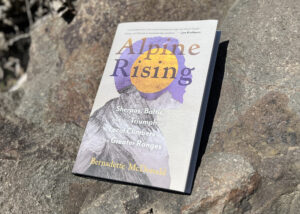Perceptions of beauty differ from person to person and culture to culture, but certain cultures and eras have practiced extreme forms of beauty that many of us might deem bizarre, or even dangerous. Here, we look at five unusual standards of beauty.
Elongated skulls of the Maya
The indigenous peoples of the Americas practiced artificial cranial deformation, also known as head binding. This process shaped an infant’s skull into an elongated shape while the skull was at its most malleable. Around five days after a baby’s birth, the mother places the child’s head (back of the head and forehead) between two wooden boards and applies a little pressure every day for up to six months. The result: an equally sloped head at the back and front.

An elongated skull. Chile, 2nd Century AD, Museum of the Americas, Madrid, Spain. Photo: WH_Pics/Shutterstock
The Maya believed that an elongated skull protected a defenseless baby’s soul. Secondly, it elevated one’s social status. The elongated heads of those in the upper echelons of Mayan society distinguished them from the peasantry.
For the Mayans, an elongated skull made a person more attractive. The practice also paid homage to the Mayan god of maize, Yum Kaax. Parents shaped their children’s heads to resemble ears of corn, a divine type of beauty.
Other cultures, including the Huns, Alans, Taino, and Manbetu, practiced some form of cranial deformation. Techniques varied. Some of these groups only bound the heads of women or used cloth instead of wood.
Many questioned the practice’s effect on brain development. A neurosurgical study in the June 2007 issue of Neurosurgery Journal found that “there is no anthropological evidence as to the possible cognitive effects that such deformation may have.”
Despite plenty of evidence to the contrary, certain contrarians believe that these skulls suggest extraterrestrial influence.
Ringed necks of the Kayan
Women of the Kayan tribe in Myanmar have worn their iconic neck coils for centuries. While they may look uncomfortable, the Kayan comfortably wear them for most of their lives. The world affectionately calls them “the giraffe women.”

Inle Lake, Myanmar, 2016. A Kayan woman. Photo: Phuong D. Nguyen
Girls start wearing the rings at five years old. The coils wrap around the neck, forcing the collarbone and ribs downwards. The neck remains unaffected. The coils only create the illusion of a longer neck.
The Kayan view a longer neck as more attractive. The coils (usually brass or gold) can weigh up to 20kg and generally are only removed to swap a coil for a longer one.
But the coils have several drawbacks. There is initial discomfort, weakened neck muscles, and sometimes dark bruises on the collarbone. The tradition has now started to die out. Many young women consider it old-fashioned.
Some outsiders have exploited this centuries-old tradition. Recently, the Thai government forced some Kayan women who fled the conflict in Myanmar to become tourist attractions in exchange for asylum.
The Ndebele women of South Africa also wear neck rings. However, only married women wear them, and they do not influence the collarbone and ribs like those of the Kayan. The Ndebele’s rings are individual rings and do not wrap around the neck.
Lip plates of the Mursi tribe
In southwestern Ethiopia, girls aged 15 go through “bansai,” the transition from girlhood to womanhood. The Mursi mark this auspicious occasion with a unique ritual. The girls receive a “dhebi a tugoin,” a lip plate.
A female relative makes an incision on the lower lip which is then stretched by placing a peg or plug inside. The cut requires a couple of weeks to heal before they add longer sticks. When stretched enough, they insert a lip plate made of wood or clay. These plates can measure up to 12cm. Sometimes, it is necessary to extract a few teeth to accommodate the plate.
After this grueling process, the girl is ready for marriage.

Women from the Mursi tribe with lip plates. The bigger the lip plate, the more beautiful the woman is considered. Photo: Luisa Puccini/Shutterstock
The Mursi consider the lip plate a symbol of beauty, fertility, strength, and steadfastness. Girls paint the plates in colorful designs. They can remove the plates but must wear them for special occasions and when they serve men food. They stop wearing the plates if they are in mourning.
Anthropologists have seen this tradition in other parts of the world, including various indigenous groups in the Americas, the Makonde of Tanzania, and the Gobi of Chad.
Bound feet in China
In the 900s, an emperor named Li Yu had an odd request for his beloved mistress Yao Niang. He asked her to bend her feet uncomfortably, wrap them in silk, and dance on her tiptoes. His fetish started the painful trend of foot binding, which permeated Chinese culture until the 20th century.
The painful process of foot binding starts with a bizarre kind of pedicure. The feet are soaked in animal blood and herbs, then the toenails are shaped. Next, all toes except for the big toe are curled under the foot and broken. The sole and heel were then pressed together, and the foot was bandaged several times.
Over time, the deformed toes stay in place. The foot binder aims to shape the foot into a lotus. The aftercare process included soaking the raw foot in hot water and burning fragrances to mask the rotting smell.

A close-up of the bound foot of a 97-year-old Chinese woman. Born in 1919, she was part of the last generation to bind their feet. Photo: Yu Zhang/Shutterstock
Some Chinese believed that bound feet made women walk with smaller steps and appear more feminine and fragile. Women in the upper echelons of society wore luxurious, beautifully designed shoes to hide their damaged feet. Upper-class girls had their feet bound at a mere three years of age.
The Foot Emancipation Society formed in 1887. Despite initial opposition, its principles and mission spread throughout provinces like Hunan, Foshan, and Huguang. Hundreds of thousands of people favored eliminating the custom. Eventually, in 1912, the government banned the practice.
However, in some rural areas, the practice continued, despite countless infections and amputations.
American author Lisa See explored this in her bestselling books, Snow Flower and the Secret Fan and China Dolls.
Black Teeth in Japan
“Ohaguro,” the practice of dyeing one’s teeth black, signified a Japanese aristocrat’s coming of age. The tradition goes back to 300 AD. Both men and women dyed their teeth during adulthood ceremonies. The Japanese used a black substance made from tea, remnants of iron fillings, and vinegar. The mixture has a long-lasting effect.
From the 17th century, black teeth were mainly associated with geishas. The stark contrast between the geisha’s ghostly white painted face and black teeth was said to attract men like moths to a flame.
The practice lost popularity in the 1870s when the Japanese government decided the tradition was not in line with the country’s goal to modernize. To discourage the practice, Japan’s Empress at the time, Haruho, embarked on an intense campaign emphasizing the beauty of white teeth. However, black teeth are still displayed in theatre performances, films, and traditional festivals.
Other countries like Thailand, The Philippines, and Vietnam have also recorded the practice.






